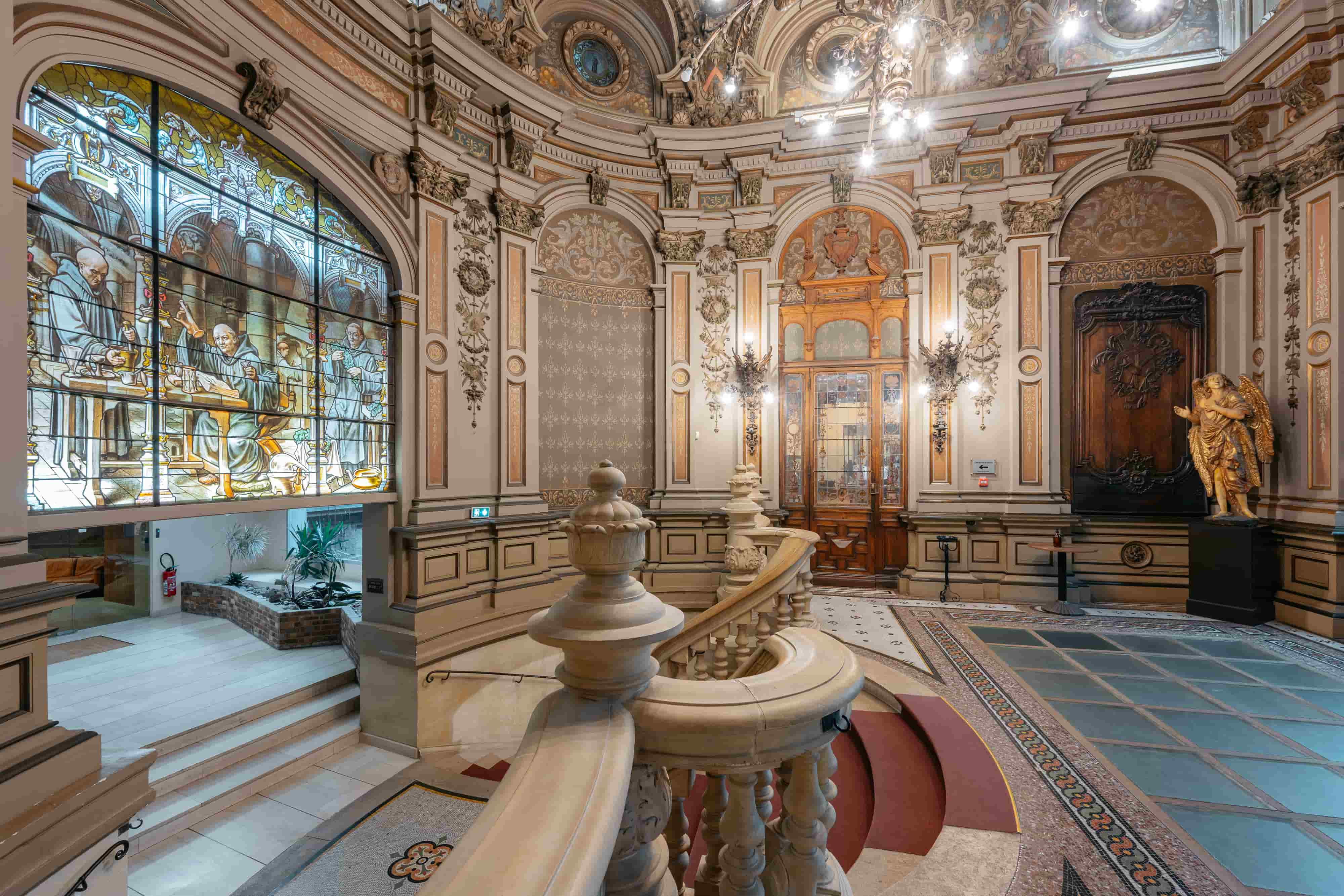

In 1510, in the heart of Fécamp Abbey, the monk Dom Bernardo Vincelli created Benedictine, an elixir that enjoyed undeniable success until the end of the 18th century. But the recipe was eventually lost in the meanders of the French Revolution, and it wasn't until 1863 that a Fécamp wine merchant rediscovered it, by chance, in a grimoire in his library. This Alexandre Le Grand then decided to create the present-day liqueur bearing its original name, inspired by the elixir of the Benedictine monks.
Around his distillery, still in operation today, he also had a palace built to house his collection of ancient and sacred art. Erected at the end of the 19th century, this architectural masterpiece combining neo-Gothic and neo-Renaissance styles is the only place in the world to hold the composition of the drink, as the mystery surrounding it has given rise to numerous counterfeits (at least 600 have been recorded, to be discovered on site).
Admire the hammered copper stills, smell the 27 ingredients of the famous liqueur in the plants and spices room, and taste the finished product after ageing in the Palais cellars: lovers of ancestral know-how can learn all about the production of Bénédictine (or Benedictine liqueur) on guided tours of the Palais of the same name.
They can even take part in a cocktail workshop at the aptly named La Verrière bar, where they can learn all about mixology, or taste crêpes that inevitably include the local beverage in their recipes.
For lovers of material heritage, the Musée du Palais exhibits a rich collection of sculptures and paintings, as well as religious objects (including exceptional manuscript collections) and ironwork. A fine preamble to the discovery of the distillery and its cellars.
To prepare your visit, and book one of the on-site experiences on offer, visit the Palais Bénédictine website.
Valérie from Comme des Français
----
Continue reading with these articles:
Alcohol abuse is dangerous for your health, and should be consumed in moderation.
Crédit photo : Wonguy_Palais Benedictine